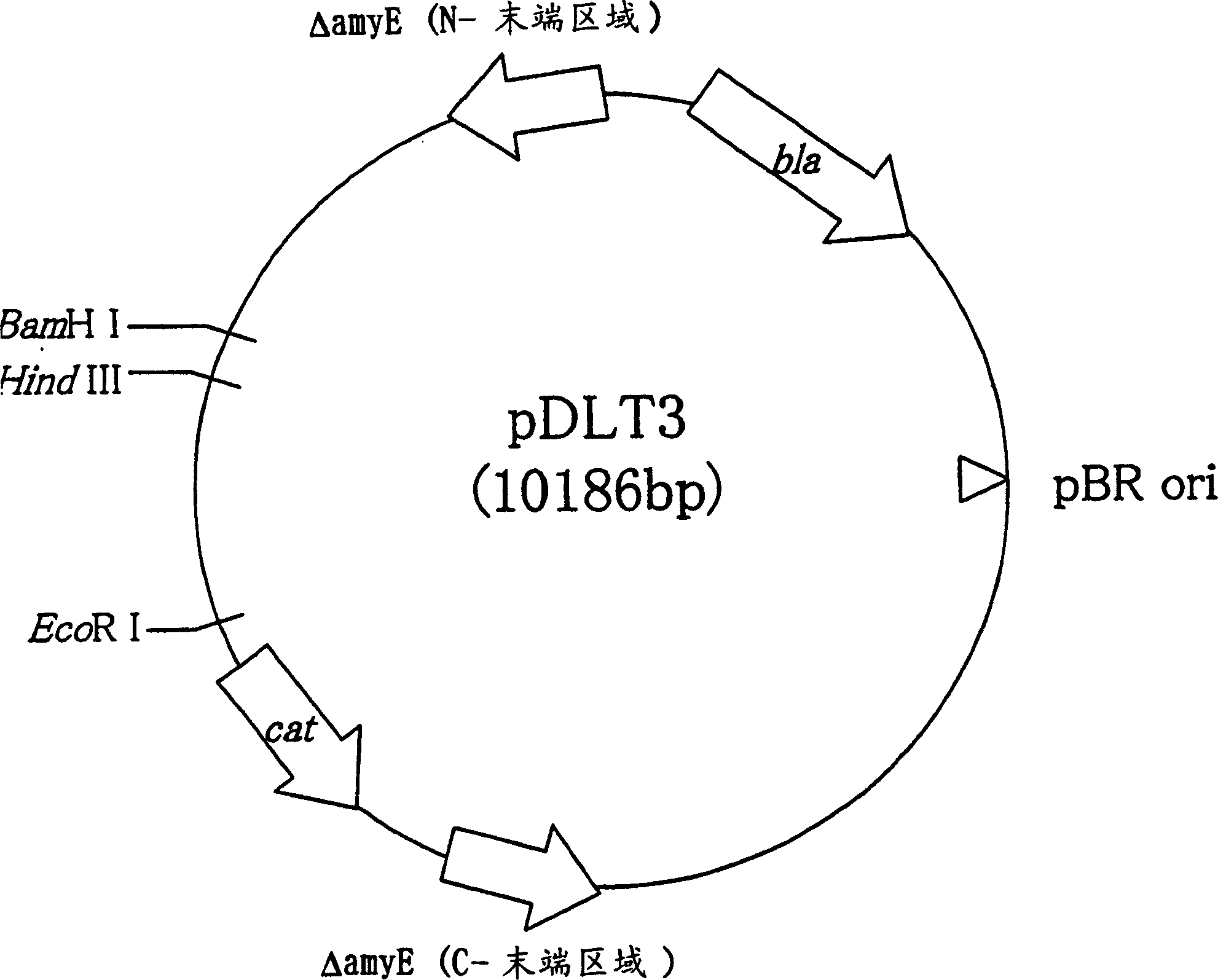Method for preparing target matter
A technology of bacteria and amino acids, applied in the direction of microorganism-based methods, biochemical equipment and methods, microorganisms, etc., can solve problems such as inability to use methanol
- Summary
- Abstract
- Description
- Claims
- Application Information
AI Technical Summary
Problems solved by technology
Method used
Image
Examples
Embodiment 1
[0061] Example 1: Cloning of methanol dehydrogenase gene
[0062] Using conventional methods, chromosomal DNA was prepared from Bacillus brevis S1 strain (NCIMB 12524, obtained from NCIMB), which is a methanol-assimilating thermostable bacteria belonging to the genus Bacillus. Then, the MDH gene was cloned by PCR using this DNA as a template (see Japanese Patent Laid-open Publication No. 2000-69976).
[0063] The DNA primers used were MDH-BM-1 (SEQ ID NO: 1) and MDH-BM-2 (SEQ ID NO: 2). It was prepared by referring to the known nucleotide sequence of MDH gene of Bacillus methanoliocus C1 strain (registered in GenBank, accession number M65004, the accession name of BACMDH). PCR was performed using LA-Taq (Takara Shuzo) at 94°C for 90 seconds, 98°C for 10 seconds, 55°C for 30 seconds, and 70°C for 4 minutes, repeating 30 cycles, and then incubating at 72°C for 10 minutes. Through these reactions, DNA fragments of the desired length are obtained. The DNA fragment was purified and clo...
Embodiment 2
[0070] Example 2: Incorporation of mdh into the chromosome of Bacillus subtilis L-lysine producing strain
[0071] The Bacillus subtilis AJ11779 strain modified to produce L-lysine is a strain described in Japanese Patent Laid-open Pubication No. 58-149689. The ability to produce L-lysine is imparted to the organism by imparting resistance to growth inhibition caused by AEC, which is a lysine-like compound and threonine. The strain was deposited in an independent administrative institution, National Institute of Advanced Industrial Science and Technology, International Patent Organism Depoisitory (independent administrative institution, National Institute of Advanced Industrial Science and Technology, International Patent Organism Depoisitory) on September 9, 2001 (Address: Postcode 305) -5466, Chuo Dai-6, 1-1 Higashi 1-Chome, Tsukuba-shi, Ibaraki-ken, Japan), its registration number is FERM P-18453. Then, the deposit was changed to an international deposit under the Budapest Trea...
Embodiment 3
[0075] Example 3: Cloning of the gene encoding MDH activator derived from Bacillus subtilis
[0076] It is known that there is an activator of the enzyme activity of NAD-dependent methanol dehydrogenase derived from methanol-assimilating bacteria of the genus Bacillus. Japanese Patent Laid-open Publication No. 2000-69976 (OP884) discloses a factor of this type present in Bacillus subtilis. This factor is named Amd (activator of methanol dehydrogenase).
[0077] The gene encoding Amd (amd) was cloned from Bacillus subtilis by known methods. In particular, the cloning was performed as follows. Bacillus subtilis 168 strain was cultured in LB medium, and chromosomal DNA was extracted from the obtained cells by a conventional method (Biochem. Biophys. Acta., 72, 619-629 (1963)). The chromosomal DNA is used as a template in PCR, and oligonucleotides that can have EcoRI restriction enzyme sites (SEQ ID NOs: 10 and 11) at both ends of the target DNA fragment are used to amplify the DNA fr...
PUM
 Login to View More
Login to View More Abstract
Description
Claims
Application Information
 Login to View More
Login to View More - R&D
- Intellectual Property
- Life Sciences
- Materials
- Tech Scout
- Unparalleled Data Quality
- Higher Quality Content
- 60% Fewer Hallucinations
Browse by: Latest US Patents, China's latest patents, Technical Efficacy Thesaurus, Application Domain, Technology Topic, Popular Technical Reports.
© 2025 PatSnap. All rights reserved.Legal|Privacy policy|Modern Slavery Act Transparency Statement|Sitemap|About US| Contact US: help@patsnap.com

